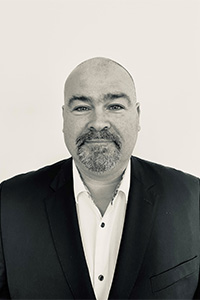From small beginnings at the turn of the millennium, Exchange-Traded Funds have become an established part of the investment landscape. But their evolution is far from over. From thematic funds, most notably in ESG, to an emerging market in actively managed ETFs, the sector continues to grow and innovate, says Caceis’ Senior ETF Expert Gilles Dubos.
Exchange-Traded Funds came to prominence as a passive investment vehicle – providing access to global, national and sector indices in an easily tradeable form. Today, investors are looking for more. The rise of Environmental, Social and Governance (ESG) issues has transformed investment of all kinds, and ETFs have risen to the challenge. At the same time, interest is growing in actively managed ETFs that can combine investment agility with the ease of trade and transparency for which ETFs are known.
Gilles Dubos, ETF expert at fund services group Caceis, sees the ETF market’s continuing growth and development driving demand for more complete solutions from service providers. “We have great ambitions for the future development of ETFs, and they are one of the key axes for our 2025 Medium Term Plan,” he says.
Caceis has grown rapidly in the ETF space since it first began providing services to the market in 2015. The group is now one of the top-three providers in Europe, with client funds representing about €100 billion in investments. Over several years, it has been investing in its core services platform TEEPI for institutional investors and asset managers with the aim of being a ‘one-stop shop’ for ETF issuers.
Caceis’ latest stage in this strategy, announced in February, is its partnership with index and data specialist Ultumus to provide Portfolio Composition File (PCF) solutions – the key step in the creation of any ETF.
Cutting through complexity
The inclusion of PCF capability is a key step in Caceis’ ambitions, as the portfolio composition file is the critical stage in establishing an ETF – defining the indices or individual assets held in the fund. But there are other technical challenges. This, says Dubos, is an essential aspect of Caceis’ service capability.
“ETFs are Ucits funds, it’s a simple and well-understood brand, and that is one of the main explanations for their success. However, setting up an ETF can be quite complex. On the issuing side, there is the portfolio composition file. Clients also have to choose a depositary model. They need links with market-makers and authorised participants (APs). They need a capital markets team and, of course, a sales team to promote the fund to their target investors.
“Coming to the ETF market with something mainstream like an S&P 500 ETF would be quite challenging for a newcomer, because those types of funds are already well represented.”
“On the administrative side, that’s us, we need to be able to manage interactions with the APs, and you need a portal to allow the APs to place their orders in an efficient way.”
Many clients choose to handle these set-up issues themselves, but Dubos says others want to plug into service providers for some or all administrative functions. Flexibility and investment in new capabilities will be the key to serving clients.
“The technology requires constant investment, which we have been doing for several years, so we can work efficiently with the AP and provide tailoring so the issuers can choose how much they want to be involved on that side – authorising orders, for example.”
Despite the challenges of setting up an ETF, their potential appeal to investors makes the effort worthwhile. But the expectations of investors are also changing, and success requires issuers to keep pace.
Innovation and evolution
“The key to a successful ETF is good distribution and a good product that will attract investors, and in the past couple of years, that has meant themed ETFs and especially ESG products,” says Dubos. “Last year, about two-thirds of ETF launches were ESG-themed,” he adds.
The green boom, driven in part by the launch of the EU’s Sustainable Finance Disclosure Regulation (SFDR), has not come without challenges.

“They did not anticipate the success that SFDR would have and how many managers would start to label their funds under one of the SFDR articles,” says Dubos. “The clarification that came out last year led to a reassessment and a lot of funds needed to change their classifications, so there is a stabilisation needed here, but I think that is coming, and the appetite for ESG-themed ETFs will continue.”
While the green and responsible investment agenda has dominated the market, there is a related development that, while still small in scale, has the potential to transform the market – actively managed ETFs.
ETFs have long been seen as an essentially passive investment, often tracking market or sector indices, but actively managed funds are increasing in number. The trend is linked to the ESG agenda, with institutions seeking more direct accountability for investments. It also reflects a wider desire for more agile investment and, according to Dubos, a significant opportunity for new players to enter the market.
“Coming to the ETF market with something mainstream like an S&P 500 ETF would be quite challenging for a newcomer because those types of funds are already well represented. But we are seeing a lot of clients that have not previously been in ETFs and for whom active management is in their DNA now looking at ETFs. For them, ETFs offer a whole new potential distribution channel. So, I think we will see more and more actively managed ETFs in Europe.”
ESG and actively managed funds are only the two most prominent developments in ETFs, according to Dubos. Plans for a consolidated tape across European stock markets announced in February will provide a single data source on pricing across EU exchanges and will bring new price efficiency for EFTs, says Dubos.
“The key to a successful ETF is good distribution and a good product that will attract investors, and in the past couple of years, that has meant themed ETFs and especially ESG products.”
He is also keeping a watchful eye on the potential for tokenisation – the application of blockchain technology to ETFs. Such a development may not seem imminent, but Dubos says it is important for service providers to keep an eye on the potential for the technology.
While ETFs are now a well–established investment product, they are still evolving – adapting to the global appetite for ESG-themed investment and innovating with new models such as actively managed funds.
And while the year ahead contains many uncertainties for markets and investing, not least the continuing conflict in Ukraine, the prospects for developed economies look rather more promising than at the end of 2022.
Dubos believes the outlook for ETFs in 2023 and beyond is extremely positive. “I think we are going to keep seeing significant ETF launches in 2023, and the inflows to ETFs will continue,” he says.
With the latest additions to Caceis capabilities, he is equally confident that the group can build on an already strong position as a service provider to a growing and innovating market.
© 2023 funds europe





